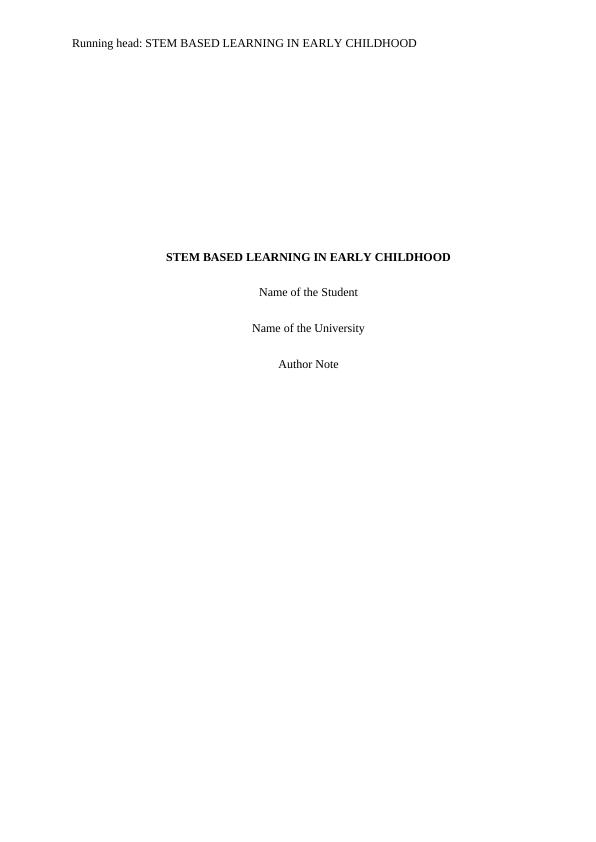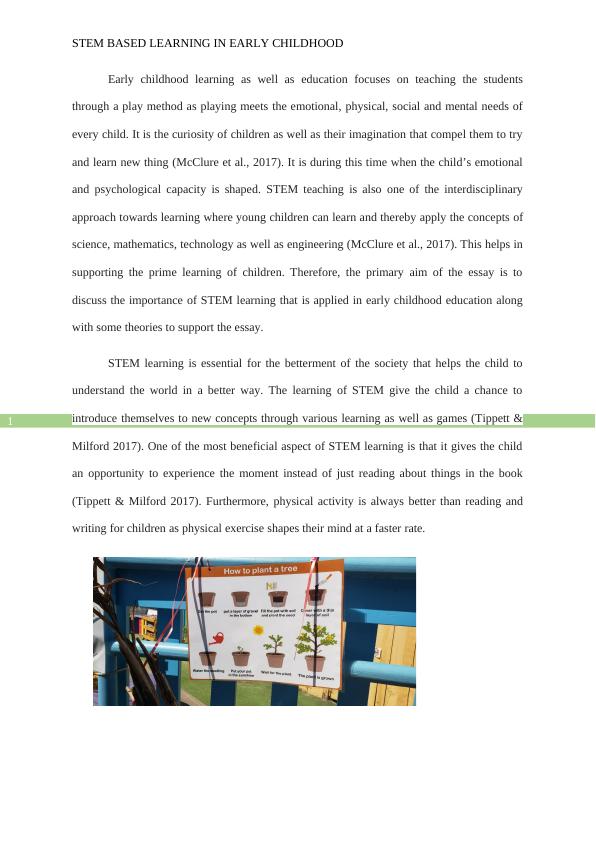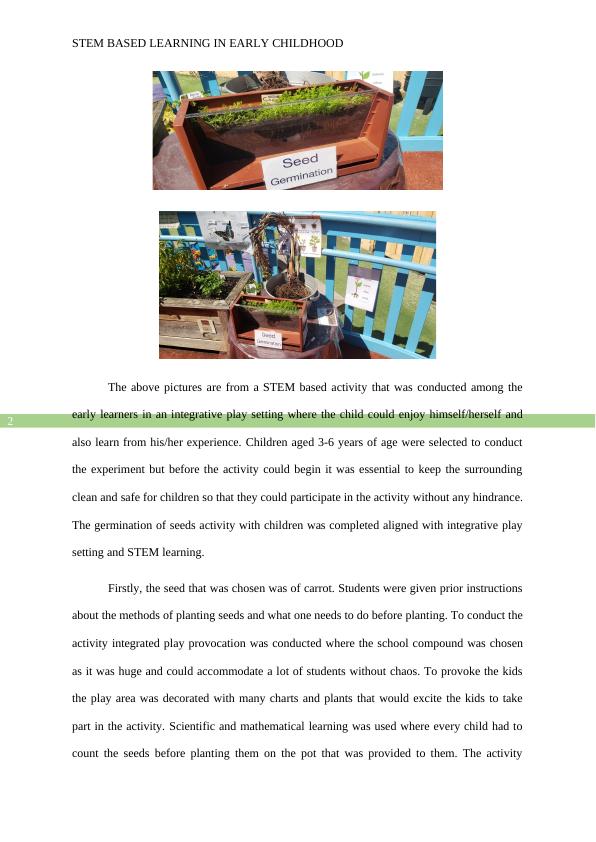STEM Based Learning in Early Childhood
Design and create a play-based learning area that integrates STEM learning for children aged 3-6 years, incorporating early childhood theory and literature references.
7 Pages1755 Words19 Views
Added on 2022-08-22
STEM Based Learning in Early Childhood
Design and create a play-based learning area that integrates STEM learning for children aged 3-6 years, incorporating early childhood theory and literature references.
Added on 2022-08-22
ShareRelated Documents
End of preview
Want to access all the pages? Upload your documents or become a member.
Bioliogy Assignment: Integrated STEM in Play-Based Learning Area
|7
|1621
|20
Mathematical Thinking: Assignment
|15
|2572
|120
Indoor/Outdoor Learning Environment for Children AREA Outdoor ACTIVITIES MATERIALS
|4
|289
|101
Early Childhood Education and Care Mathematical Tasks
|6
|1438
|451
Early Childhood Mathematics Learning: Activities, Environment, and Numeracy Skills
|8
|1494
|472
Mathematics for Young Children (Doc)
|17
|4930
|51



